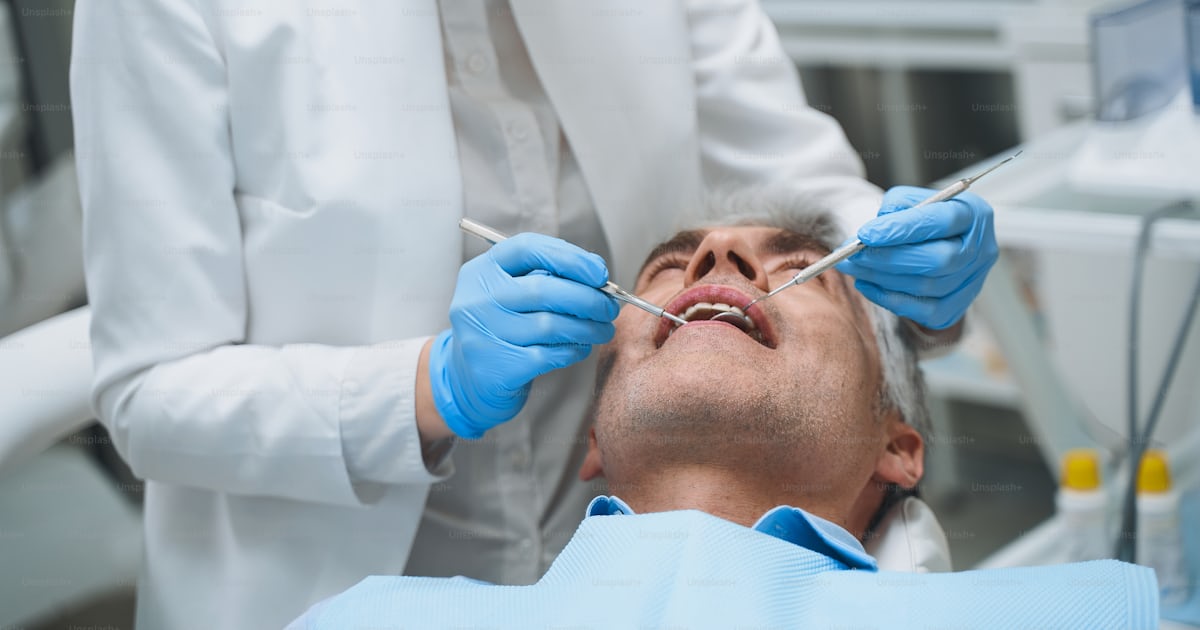Premier Dental Johnstown Ohio - Full Mouth Dental Implants Columbus OH
Premier Dental Johnstown Ohio - Full Mouth Dental Implants Columbus OH
Blog Article
Dental Implant Alexandria OH - Dentist near Ohio
Dental implants are a well-liked answer for missing teeth, gaining prominence for their ability to mimic the structure and function of natural teeth. The success of dental implants hinges significantly on their integration with the jawbone. This course of, often identified as osseointegration, is crucial for making a secure and long-lasting foundation for the artificial tooth.
Osseointegration happens when the implant interacts with the bone tissue, leading to a agency connection. The materials utilized in dental implants, typically titanium or titanium alloys, possess bio-compatibility characteristics that encourage bone growth around them. This integration allows for a functional and stable support system for prosthetic teeth.
When an implant is positioned within the jawbone, the body responds by initiating a healing course of that promotes the expansion of latest bone cells. Over time, these bone cells deposit around the implant, effectively anchoring it in place. This natural organic process is influenced by various components, together with an individual’s general health, the standard of the bone, and the surgical method employed (Dental Implant Johnstown OH).

It is crucial to know that not all patients are ideal candidates for dental implants. Several elements can affect the likelihood of successful osseointegration. Conditions similar to uncontrolled diabetes, smoking, and osteoporosis can hinder the therapeutic course of and challenge the steadiness of the implant. Therefore, a radical dental and medical analysis is crucial earlier than the process.
Dental Implant Pataskala OH - Dental Implants
The procedure typically begins with the cautious placement of the implant into the jawbone. This is finished underneath native anesthesia to make sure patient comfort. Following the insertion, a healing interval is crucial, starting from a few weeks to several months. This timeframe allows for adequate bone regeneration and integration to occur, in the end resulting in a strong, useful unit.
During the healing phase, a protecting cover may be positioned over the implant. This ensures that the location remains undisturbed and permits for optimum conditions. Once healing is complete, an abutment is connected, which serves because the connector between the implant and the dental crown. The last restoration is then custom-made to match the color and form of the natural teeth, guaranteeing a seamless appearance.
The relationship between dental implants and the jawbone is dynamic. The mechanical forces generated throughout biting and chewing stimulate the bone across the implant. This stimulation is significant for sustaining bone density and health. Failure to provide such stimulation can result in bone resorption, which may jeopardize the steadiness of the implant over time.
Regular follow-up visits to the dentist are essential for monitoring the combination course of and addressing any issues promptly. These visits additionally assist make positive that the peri-implant tissues stay healthy. Oral hygiene practices, including brushing and flossing, play a significant role in supporting the health of the tissues surrounding the implant.
Dental Implant Johnstown OH - Dental Services

Long-term success regularly hinges on the bone's ability to accommodate the implant's presence. Bone reworking can happen in accordance with the stresses and strains exerted on the implant. If the implant is uncovered to extreme forces, it might end in problems. Adequate care and a spotlight to patient-specific characteristics are paramount in attaining favorable outcomes.
In some instances, supplemental procedures, similar to bone grafting, may be necessary before implant placement. This is often the case when there's insufficient bone quantity to assist an implant. Bone grafting enhances the amount and quality of bone, thereby promoting better integration outcomes. These additional procedures, whereas generally deterring for sufferers, can significantly improve the chances of profitable osseointegration.
Technological developments in dental implant know-how continue to evolve. The introduction of 3D imaging and computer-aided design has revolutionized the planning and placement of dental implants. These modern strategies improve precision, scale back surgical risks, and promote better therapeutic outcomes by guaranteeing that implants are positioned optimally inside the jawbone.
Dental Implant Sunbury OH - Dental Services - Ohio
Educating sufferers concerning the importance of osseointegration is important. Understanding the need for post-operative care, including dietary restrictions and the significance of avoiding dangerous habits like smoking, can contribute to the success of the implant. An knowledgeable patient is more more likely to adhere to care recommendations, resulting in a better success rate (Dental Implant Alexandria OH).
Successful osseointegration ultimately results in several benefits for sufferers. These embrace improved aesthetic appearance, enhanced functionality, and increased confidence. The ability to eat a broader vary of meals and speak clearly without the concern of unfastened dentures offers a significant quality-of-life enchancment.
Maintaining an open dialogue with dental professionals ensures that patients really feel supported throughout their dental implant journey. Through a collaborative approach, sufferers can tackle any concerns that come up during treatment and recovery. This partnership fosters a trusting relationship that in the end contributes to successful integration.
Dental Implant Condit OH - Best Dental Implants near Ohio
Dental implants current a versatile and efficient resolution for tooth replacement. Their ability to integrate with the jawbone not solely restores lost perform but also enhances the general health of the oral cavity. By investing time and effort into the osseointegration process, dental professionals and sufferers can work together to realize long-lasting outcomes.
The journey towards a fully functional smile might contain challenges, however the rewards are profound. A well-integrated implant can provide a lifetime of advantages, provided that both the implant and surrounding buildings are appropriately cared for. Education and commitment to oral hygiene are very important parts of guaranteeing that dental implants stay a successful solution long into the future.
In conclusion, understanding how dental implants integrate with the jawbone is integral to appreciating their position in trendy dentistry. To absolutely benefit from their benefits, like this sufferers have to be proactive of their care and attentive to the recommendation of their dental professionals. Ultimately, the interaction between implants and bone health shapes the success of treatment, resulting in brilliant, assured smiles.
- Dental implants are designed to imitate natural tooth roots, permitting for steady and safe integration with the jawbone by way of a course of known as osseointegration.
- The floor texture of implants performs a vital function; micro-roughened surfaces improve bone cell attachment and promote quicker healing and integration.
- Depending on the implant material, titanium is most commonly used due to its biocompatibility, allowing the body to just accept the implant with out rejection.
- The placement of a dental implant entails surgically embedding it into the jawbone, after which the bone steadily grows across the implant, securing it in place.
- Adequate bone density and quantity are essential for successful integration; insufficient bone could require grafting procedures earlier than implant placement.
- The body’s natural therapeutic responses facilitate the growth of new bone cells around the implant, strengthening the connection and ensuring long-term sturdiness.
- After the preliminary healing phase, dental professionals may use imaging strategies to observe the mixing process and ensure correct alignment and stability.
- Implant integration is influenced by elements such as the patient’s overall health, smoking habits, and oral hygiene practices, which might have an result on bone healing and implant success.
- Over time, the successful integration of a dental implant can result in bone transforming, where the jawbone density improves due to the mechanical stress positioned by the implant during chewing.
- Long-term studies point out that properly integrated implants can final for decades, underscoring the importance of meticulous surgical approach and patient care in achieving lasting outcomes.undefinedWhat are dental implants and how do they work with the jawbone?
Dental Implant Granville OH - Dental Implant Placement
Dental implants are synthetic tooth roots made from biocompatible materials like titanium. They are surgically positioned in the jawbone, the place they fuse with the bone through a course of called osseointegration, providing a steady foundation for replacement teeth.

How long does the combination course of take?
The integration course of usually takes about three to 6 months, relying on particular person healing rates and the quality of the jawbone. During this time, the implant and jawbone gradually bond, ensuring stability for the artificial tooth.
What components affect the success of dental implant integration?
Dental Implant Hartford OH - Dental Implants Ohio
Several factors can affect the success of integration, together with the patient’s overall health, the density of the jawbone, oral hygiene practices, and adherence to post-operative care directions. A thorough analysis by a dental professional may help assess these elements.
Can anyone get dental implants?
Most adults are eligible for dental implants, provided they've sufficient jawbone density and good oral health. However, people with certain medical conditions, like uncontrolled diabetes or lively periodontal disease, may require further evaluation before present process the procedure.
What occurs if the jawbone is not sturdy enough for an implant?
Dental Implant Alexandria OH - Dental Services - Ohio
If the jawbone is inadequate, a bone grafting procedure could additionally be carried out to build it up before inserting the implant. This process can take additional time, because it permits the grafted bone to integrate with the prevailing jawbone.
Are there particular supplies used for dental implants?

Yes, dental implants are commonly made from titanium, identified for its energy and compatibility with human tissue. read the full info here Some implants can also utilize zirconia, a ceramic material, which presents a tooth-colored appearance and is appropriate for those with steel allergic reactions.
Dental Implant Johnstown OH - Oral Surgeon - Oral Surgery Office
What does the recovery process seem like after implant placement?
After the placement of dental implants, sufferers can expect some swelling and discomfort for a few days. It’s essential to follow post-operative care directions, maintain oral hygiene, and attend follow-up visits to watch healing and integration progress.
How can I make positive the success of my dental implants?
To make sure the success of dental implants, preserve good oral hygiene, attend regular dental check-ups, keep away from smoking, and follow your dentist's post-operative care instructions fastidiously. Your general health and life-style choices additionally play a crucial position within the longevity of your implants.
Dental Implant Granville OH - Dentist near Ohio
What are the potential risks of dental implant surgery?
As with any surgical process, there are risks concerned, including infection, nerve injury, and implant failure because of insufficient integration with the jawbone. Discussing these risks with your dental professional previous to surgery may help you make an knowledgeable decision.
Report this page